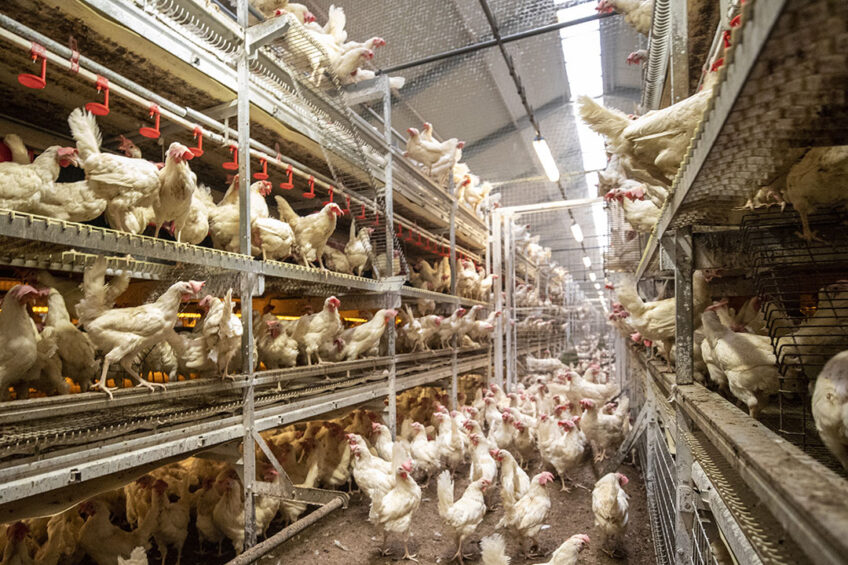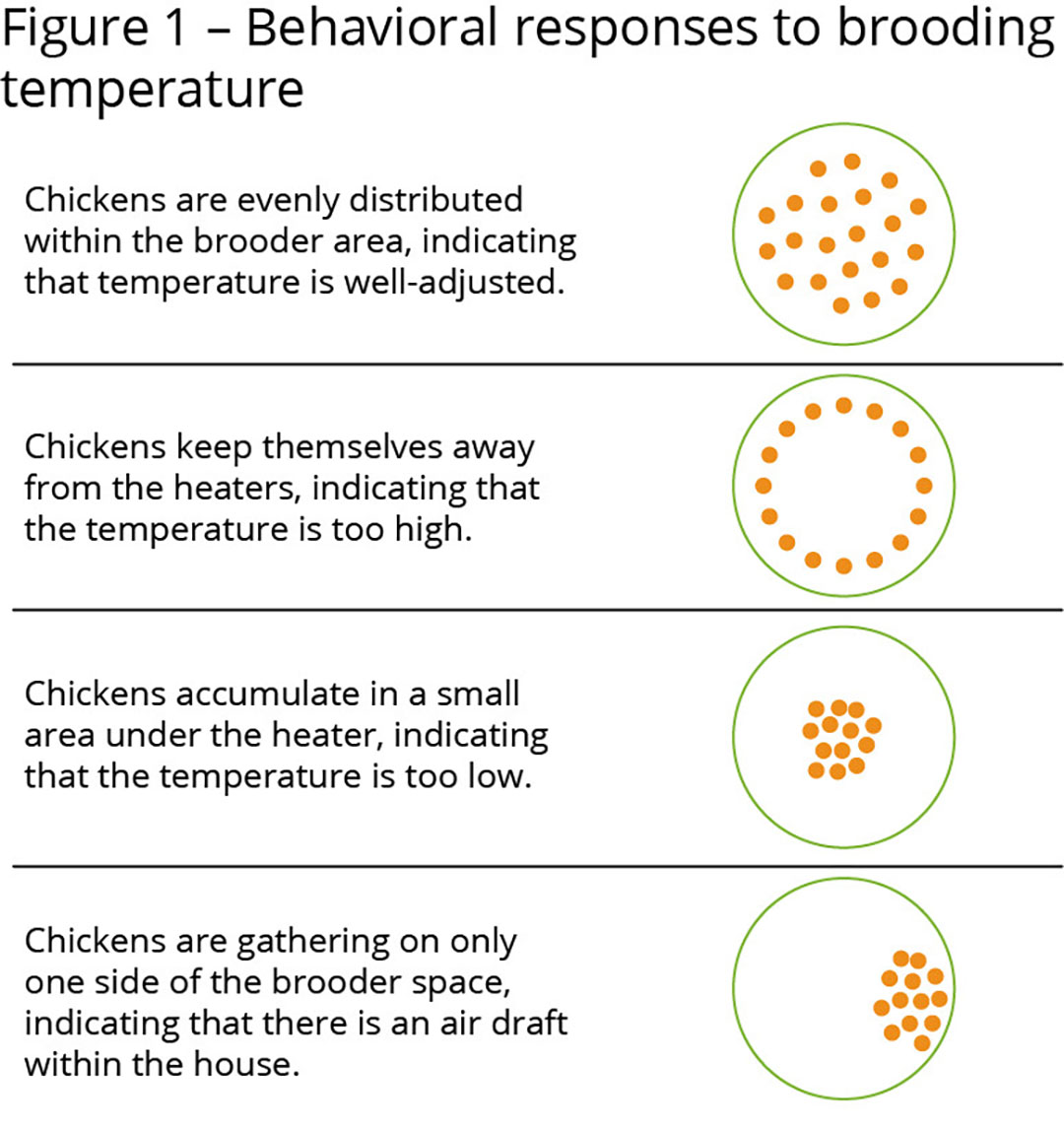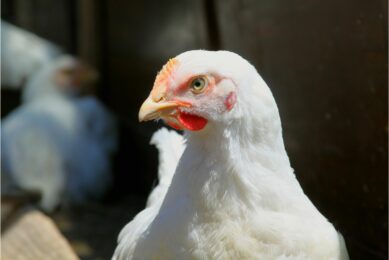Understanding poultry behaviour key to better management practices

Poultry behaviour plays an essential role in chicken meat and egg production. It is therefore necessary to have an understanding of the relationship between behaviour and husbandry so that this knowledge can be applied when determining suitable production and management practices.
Adapting feed management to get the most out of feeding behaviour should be given prime consideration by growers since feed is the major cost item in the production of chicken meat and eggs. Although feeding behaviour differ widely between strains, some common responses have been observed under practical farm conditions and these should be taken as a guide for better feeding and management.
It is generally accepted that the feed intake of a bird decreases under certain environmental conditions, such as an elevated temperature. Reduced feed intake in this case is a direct strategy to reduce metabolic heat load and maintain body core temperature. Other stress factors, such as disease outbreaks, noise and house density, also affect feed intake and can result in reduced performance.
Feed intake could be improved by removing the feed at regular intervals, as with the split-diet feeding system. This is where broilers or layers are fed a set amount of feed 4-6 times a day, so they finish their meal and are then left without feed for about an hour or less. However, additional feeding troughs should then be provided to avoid a feeding frenzy at meal times, which often leads to physical injuries and dominance over subordinate birds by aggressive ones.
Birds tend to play with their feed which results in economic losses since feed that is thrown out of the feeder will not be eaten once it reaches the floor and gets mixed with the bedding material. To minimise these losses, overfilling the feeders should be avoided and the feed should be maintained up to certain levels in the feeders (Table 1). Proper beak trimming is also important for alleviating much of the feed losses from feeders, in addition to the other advantages of reducing cannibalism and other violent behaviour.
Brooding temperature
On small farms where conventional brooders are used early in the chicken’s life, the distribution of the chickens under the heating device may be taken as an indication of the brooding temperature, as well as the ventilation status within the house as a whole (Figure 1). Adjustment of the temperature and ventilation accordingly will then be warranted.
Mating behaviour
 Obesity in male breeders is a predisposing factor to reduced mating frequency and hence reduced fertility. The relationship between obesity and mating behaviour can be explained in 2 ways. Firstly, obese males are often affected by lameness, leg injuries and foot lesions; all problems that have a direct association with reproductive failure. Secondly, obese males generally do not prefer smaller females, particularly when they are given the option of mating with larger females within a wide range of weight differences.
Obesity in male breeders is a predisposing factor to reduced mating frequency and hence reduced fertility. The relationship between obesity and mating behaviour can be explained in 2 ways. Firstly, obese males are often affected by lameness, leg injuries and foot lesions; all problems that have a direct association with reproductive failure. Secondly, obese males generally do not prefer smaller females, particularly when they are given the option of mating with larger females within a wide range of weight differences.
There are some better management practices that could minimise the fertility problems associated with male breeder obesity. The use of feeding troughs with different grill widths to exclude males has been widely adopted for this purpose. In many cases, however, males are still able to steal feed from the females’ troughs, particularly when the opening of the grills is widened at about 7-10 weeks of age to reduce injuries to the females’ heads as they reach adult size.
Mating behaviour is also influenced by feather condition, given that many birds choose their mates based on the brightness of their plumage. Feather cover can be improved by controlling external parasites that cause scratching, feather damage and discolouration. Nutritional factors are also important for the control of feather pecking which adversely affects feather cover, resulting in low fertility. An adequate supply of minerals, such as magnesium, zinc and sodium, together with some vitamins, particularly A, B, C and D vitamins, will also improve feather cover and help maintain physical attraction, in addition to the positive effects of these nutrients on the bird’s reproductive organs and physical condition.
Aggression
Cannibalism is a vicious form of aggression and is now recognised as one of the most serious problems in the management of chicks and laying pullets. The behaviour is characterised by pecking toes, combs, vents and feathers, in severe cases leading to death and other economic losses. These problems are mainly related to nutrition and the lighting system used in the poultry house.
Nutrition
Studies on protein quality have shown a correlation between arginine deficiency and cannibalism. Groups of white leghorn cockerels at 8 weeks of age were given basal mash diets in which the arginine content was 3.3%, 4.5% and 6%, respectively, of the total protein (Table 2). Cannibalism problems could be alleviated with at least 4.5% arginine, provided that optimal diets with respect to the other amino acids were also maintained.
A relationship between the fibre content of the diet and the incidence of cannibalism has also been established. The severity of cannibalism reduced linearly as the dietary fibre content increased (Table 3). Conceivably, the reduced cannibalism with a high-fibre diet could be due to the increased consumption of feed and time spent on eating. It could also be related to better utilisation of some minerals, such as sodium and potassium, involved in the prevention of cannibalism. The retention of these minerals in the body was found to be directly affected by the fibre content of the diet.
Lighting system
Blue or green light may be used to keep birds calm which acts by reducing hypothalamic gonadotropin production and hence hyperactivity, pecking damage and energy costs, without compromising the welfare of the birds. In other cases, poultry producers may be prompted to use red light to control cannibalism because the birds cannot see the blood stimulus under red light.
Red light, however, should not be used as the sole basis for alleviating cannibalism problems. Other management and feeding strategies should also be adopted to gain better control of the situation; including beak trimming, lowering the brooding temperature, removing severely injured birds, providing access to feed and water at all times, and balancing the diet appropriately according to age and type of birds reared, etc.
Combating transport stress
Under unsuitable transport conditions, there is a chance of motion sickness, discomfort, anxiety and aggression. It has also been reported that under such transport conditions, the activity of the creatine kinase enzyme in chicken plasma and the rate of glycogen turnover in their muscles both increase substantially. As a result, many of these birds exhibited muscle damage in the form of bruising and changes in the integrity of the muscle cell membrane on arrival at the processing plant. In severe cases, this has often resulted in the death of chickens.
Transport containers and vehicles should be improved and designed in such a way that acceleration and vibration remain within the acceptable levels at which birds show no fear or aversion responses. Other transport stresses such as odour, temperature changes and social disruption, should also be minimised when attempting to alleviate transport stress and the loss of birds. This is particularly important in situations where birds are to travel long distances over periods in excess of 200 minutes from farms to slaughter or processing plants.
The Poultry World Newsletter
Sign up for our newsletter and receive all our need-to-know content three times a week.











